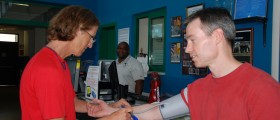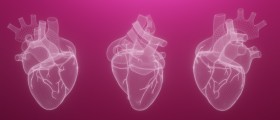
Fainting or syncope is acondition in which a person experiences a short and sudden loss ofconsciousness, due to the blood supply loss in the brain. But as opposed to aseizure, the person in question is able to recover fairly quickly and becomeconscious again. Though mostly of mild nature, fainting can be an indicator ofcertain more serious conditions.
With elderly people, thisoccurrence is not uncommon, but in their cases, it is most often in directconnection with a certain more serious cause. The risk of fainting is greaterin people who suffer from a heart disease, especially in those with congestiveheart failure or coronary heart disease. Among the causes of vasovagalsyncope or ''common fainting'', we find environmental factors (a hot settingwith lot of people), emotional factors (stress and the threat of injury),physical factors (occupying one position for longer period of time) andillnesses (fatigue, low blood sugar, dehydration etc.),
Aside from the ''common faint'',fairly frequent is also the situational syncope, when fainting is related toparticular situations. Some of the common cases of this type of fainting arecough syncope, which is typical of people suffering from a lung disease;swallow syncope, typical in people with a certain disease in the throat, and maturationsyncope, which happens after a person relieves his/her bladder. There are alsocarotid sinus hypersensitivity, which is typical in older people when makingneck movements, and postprandial fainting, in older people who experience bloodpressure falls after a meal.
Another form is postural syncope,which occurs due to the drop in blood pressure, when a person, lyingin bed and feeling perfectly normal, suddenly stands up. The common causesinclude low circulation blood volume (caused by the loss of blood,dehydration), impaired circulatory reflexes (as a consequence of taking manymedications simultaneously, nervous system disorders and congenital problems). Nextin the group is cardiac syncope, and here the cause of fainting is theunderlying heart disease. It can be life threatening and includes arrhythmia,cardiac obstruction, heart failure, seizures, stroke, certain tongue problemsand migraines.
The most frequent and mostobvious sign of fainting is certainly loss of consciousness. If experiencingvasovagal syncope, prior to fainting you may feel light-headed and experienceblurred vision. In the case of situational syncope, the consciousness isregained soon after the fainting episode. What may be noticed first withpostural syncope is a blood loss or excessive loss of fluid (diarrhea,vomiting, fever etc.). When under the influence of cardiac syncope, frequentlyreported are palpitations, weak or abnormal pulse, paleness and sweating. Thesymptoms which may announce neurological syncope are headache, loss of balance,slurred speech or vertigo. Also, when experiencing seizures, people oftenreport strange sensations which signal the upcoming unconscious period.
















Your thoughts on this
Loading...